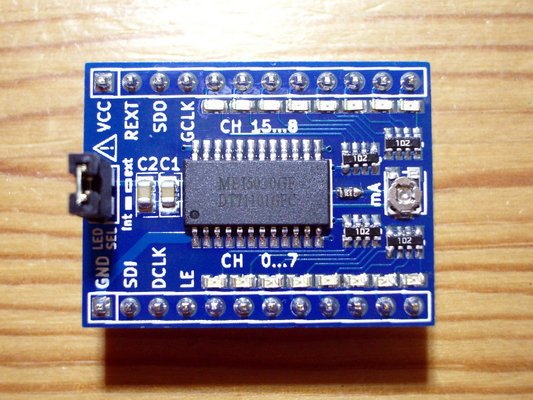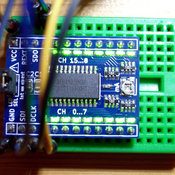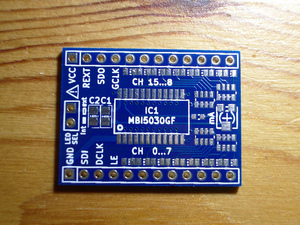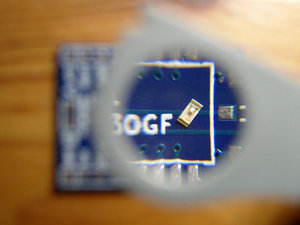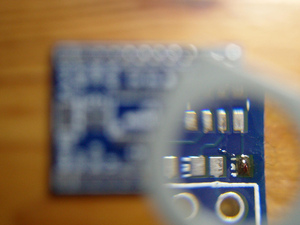-
Featured User: kurt
Open-source hardware project hosting is my passion. I spend most of my free time building neat gadgets or planning what I'll build next. I love building things, and I want to make Open Hardware Hub a place that inspires others to build, ...
-
Updates 2013 February 18
It's been a while, hasn't it? Well, that's ok because we've got a lot of updates to talk about. Most of these have been effective on the site fora couple weeks now. A few may or may not be active when this article gets posted, but they'll certainly be applied in the ...
MBI5030 starter board
By: madworm
As the title says, it is a small ‘dev-board’ that will get you started with the Macroblock MBI5030. Macroblock is a Taiwanese manufacturer whose product line includes a wide variety of very affordable and quite capable LED driver chips. They’re available at kingelectronics, a US based distributor for them.
The MBI5030 is a 16-channel constant current LED driver with 16/12-bit PWM. You send your data just once, feed the chip with a constant high frequency ‘grayscale clock’ and it takes care of the rest. Many AVR chips can be programmed (FUSE setting) to output their system-clock on a certain pin. That option is quite suitable to drive the ‘grayscale clock’.
The main idea for this board came when I was trying to write some code for that chip. I simply didn’t want to breadboard all of those LEDs, too many wires, wouldn’t easily survive transportation in a bag… With 16 onboard LEDs, all you need to wire is power and the SPI interface and you’ll get visual feedback instantly. When satisfied, pull the jumper, add high(er)-power LEDs and an external power supply to test the real thing.
I have found these chips quite valuable if you frequently deal with LED projects and have to keep the cost down. Chips from other major manufacturers (TI…) are nice too, but for a similar set of features they make you pay a lot, especially for small quantieties. It may be worth to have a look at the MBI chips, maybe even build a small stash of them. That saves shipping costs in the long run.
Download project description w/o images
Download project description w/ images
Files
This open source hardware project contains no files.
Bill of Materials
| Qty | Part # | Description | Schematic ID | Source | |
|---|---|---|---|---|---|
| 1 | MBI5030 | PWM LED-driver, 16-ch, SPI interface. | IC1 | Source | |
| 4 |
|
EXB-34V102JV | Res Thick Film Array 1K Ohm 5% ?200ppm/?C ISOL Molded 4-Pin 0606(2 X 0603) Convex SMD Punched Carrier T/R | Source | |
| 1 |
|
08055C104KAT2A | CAPACITOR, 0805, 0.1UF, 50V | Source | |
| 1 | GRM21BR61C475KA88L | CAPACITOR, 0805, X5R, 16V, 4.7UF | Source | ||
| 1 |
|
TC33X-2-202E | TRIMMER, 2K, 3MM | Source | |
| 16 |
|
SML-310MTT86 | SML-310 Series Green 0603 16 mcd Tinted Clear 2.2 V LED Surface Mount | Source |
Download BOM w/o images
Download BOM w/ images
Steps
3. The back-side holds the key information
There should be markings... some kind of symbol. Don't assume anything, measure which way they should be placed. Then make the connection with the symbol.

4. Starting with hand soldering
Place one bead of solder. Use flux.
The LEDs are tiny, so you do need a small pointed tip to get inbetween them.

Download steps w/o images
Download steps w/ images
Revisions
3 - More descriptive project description.
2 - Added a link to tindie.
1 - Initial project release
Add revision
blog comments powered by Disqus
Back

